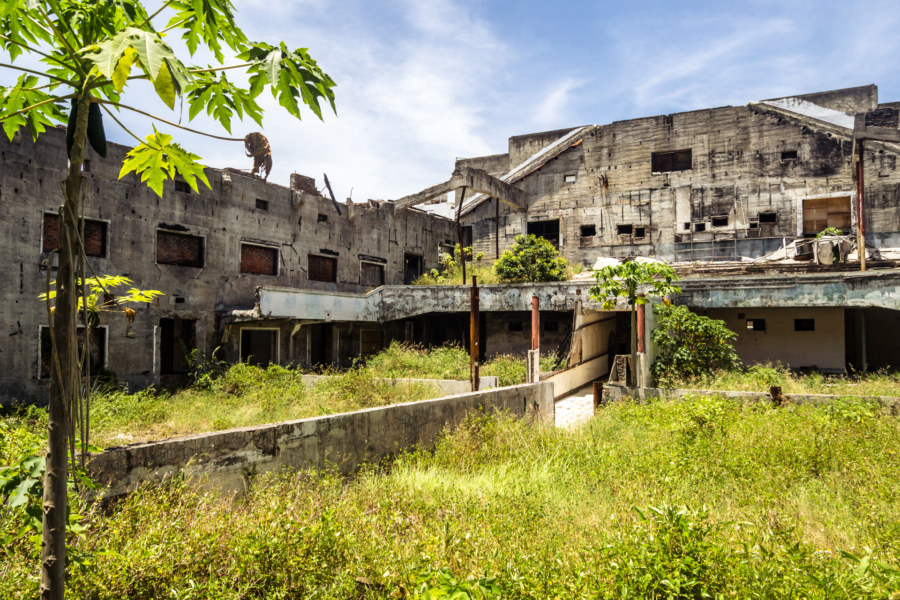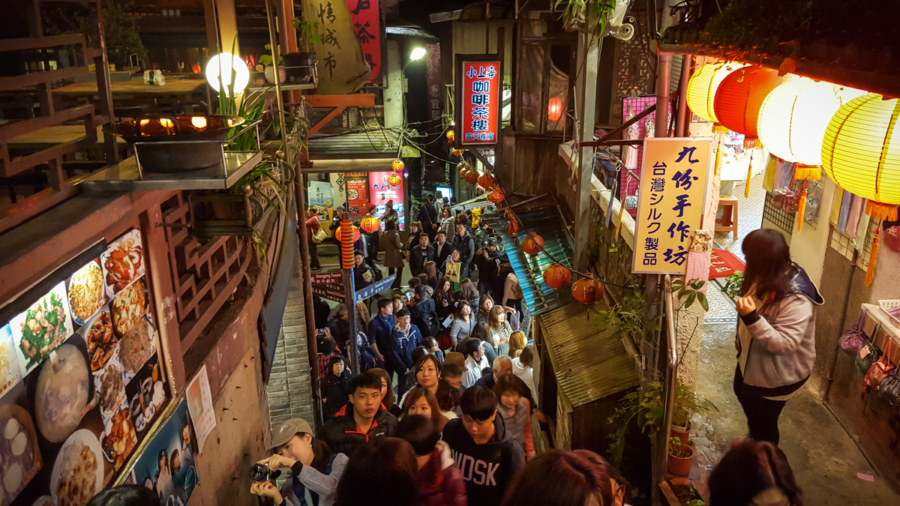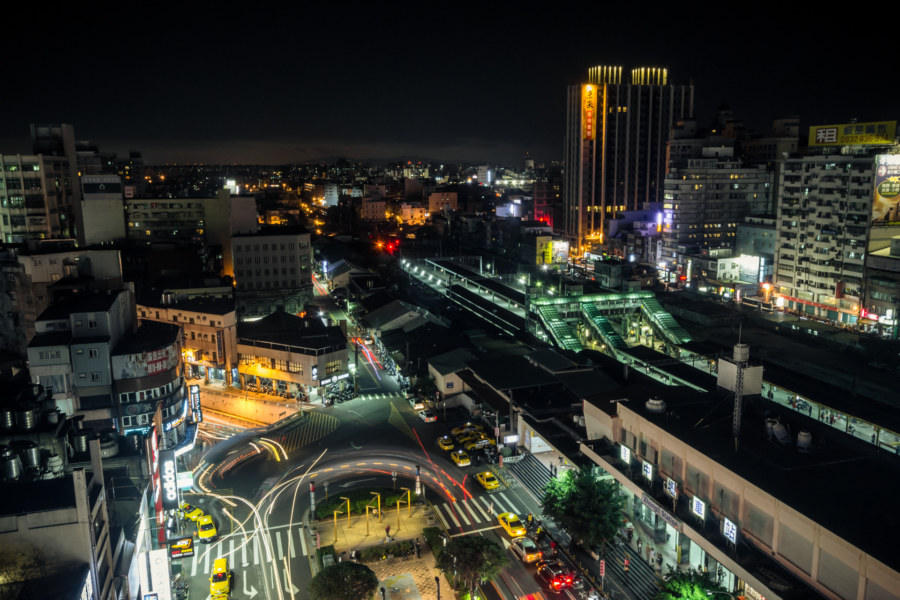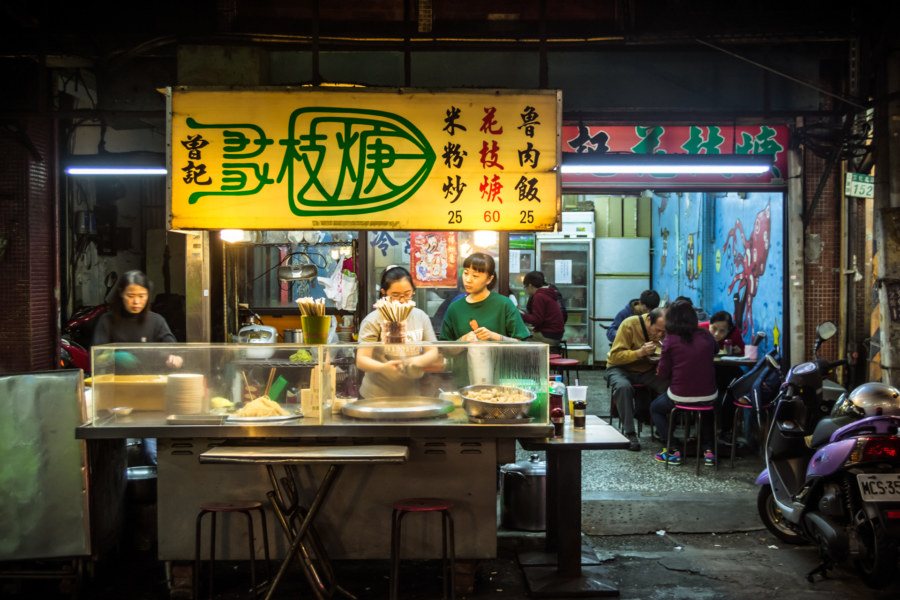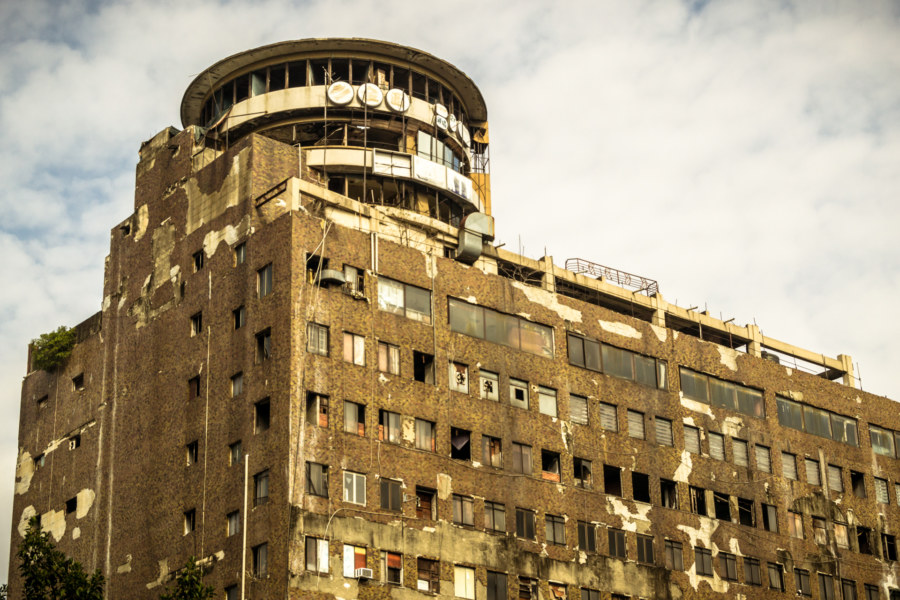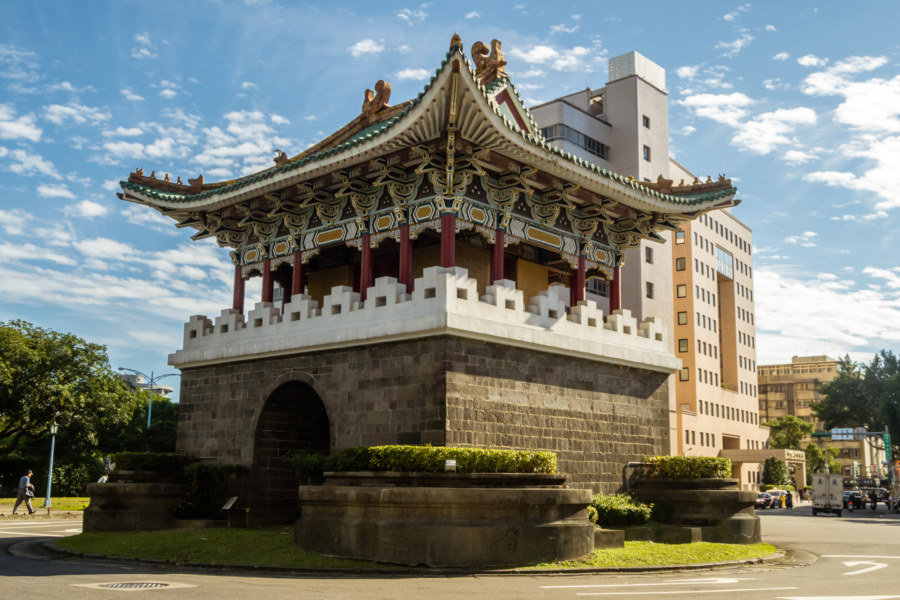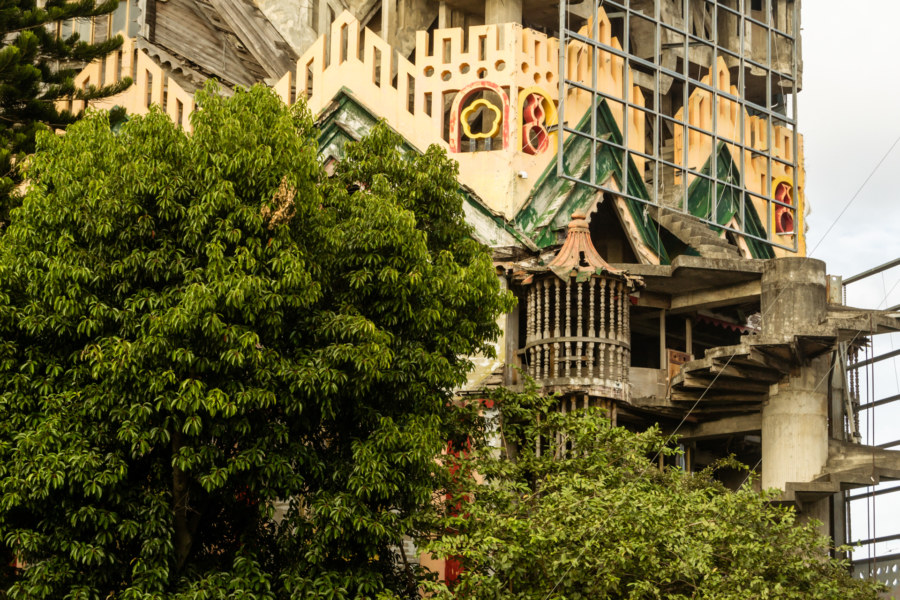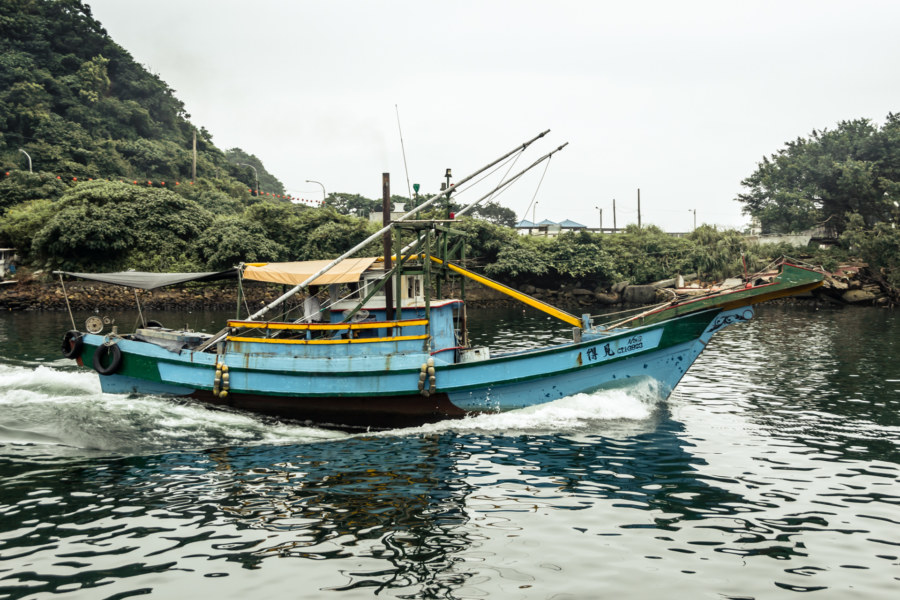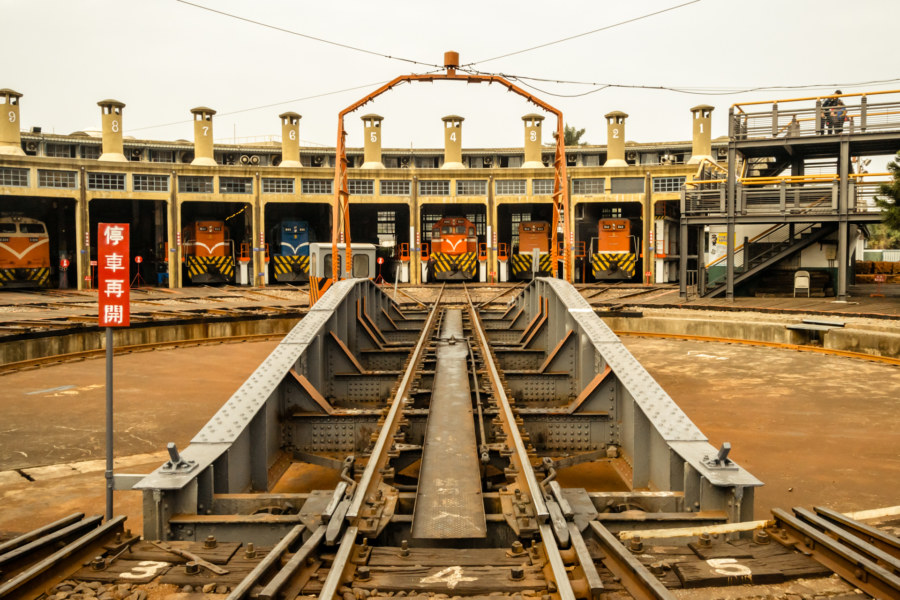Zhōngyuán Theater 中源大戲院 is a second-run theater located in the heart of Zhongyuan Night Market 中原夜市 in Zhongli, Taiwan. Zhongyuan Theater is ideally located next to the university of the same name amidst a huge population of budget-conscious students—which may explain why it remains in business unlike hundreds of other old theaters that have fallen into ruin in recent years, victims of changing consumer habits and strong competition from more modern multiplexes. Zhongyuan is also one of the very last theaters in the nation where you will find hand-painted movie posters hanging outside, a nostalgic practice more widely associated with Chin Men Theater 全美戲院 down in Tainan.
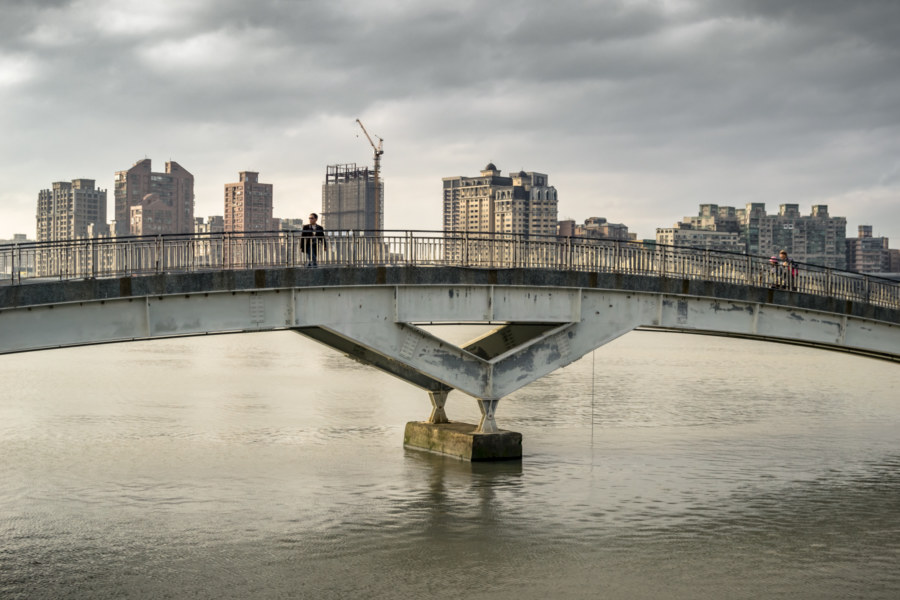
Exploring the urban condition: the buildings that tower over all, the rhythm of the streets, and the fleeting moments of humanity in the midst of the concrete jungle. See also: urbex.
Subterms
Adjacent Terms
Taitung Datong Theater 台東大同戲院
In June 2015 I undertook a bicycle trip from Tainan to Taitung City, where I spent an extra day wandering around to get more of a feel for Taiwan’s remote southeastern capital. Mere minutes after leaving my hotel, immediately after chancing upon the historic Taitung Chinese Association 台東中華會館, I noticed the stark outline of an abandoned building at the end of a short laneway leading off of Zhōngzhèng Road 中正路. After taking a closer look I realized it was yet another abandoned movie theater, of which there are many scattered all around Taiwan.
A Quick Trip to Jiufen and Keelung
Last weekend I enjoyed a couple of days outside of Taipei in the northeastern part of Taiwan. I went there with friends, ostensibly to show them around Jīnguāshí 金瓜石 and Jiǔfèn 九份, a famous mining town and major tourist attraction in the mountains of Ruifang, and ended up staying in Keelung for the night on a whim. Having recently purchased a new phone I bombarded Instagram with numerous pictures and plenty of commentary as the trip progressed. This quick and dirty post is a collection of some of my better smartphone snapshots as well as an experiment in blogging with broader brushstrokes. Perhaps you will get a sense of how I travel: spontaneously, intuitively, and with a keen eye for details.
Zhongli Caishen Building 中壢財神大樓
In my first dispatch from Zhongli I shared a photograph of the Cáishén Building 財神大樓, a rundown entertainment complex next to the train station that I meant to explore at some point. Not long after posting that I got around to checking it out—and much to my surprise, despite the incredibly rundown exterior most of the building is still occupied by hotels, daytime dance clubs, mobile phone booths, and other businesses serving the many Southeast Asian migrant workers of Taoyuan. There is, however, one part of the building that seemed obviously abandoned from street level; the skeletal outline of some kind of UFO-like structure on the rooftop demanded further investigation.
Archaic Squid Soup
I was wandering through Sānhé Night Market 三和夜市 on the first day of the new year when this small shop caught my eye. The formal name of the place is Céngjì Huāzhīgēng 曾記花枝羹 and, as the last three characters would suggest, they specialize in squid thick soup, a popular Taiwanese snack. The highly stylized characters on the signboard look something like seal script 篆書 to my inexpert eyes—with the last character, “gēng 羹”, swapped for the more traditional “焿”. Don’t ask me to make sense of that first character, mind you—it is enough to know that “huā 花” means flower.
Qianyue Building 千越大樓
The Qiānyuè Building 千越大樓 is one of the most recognizable ruins in central Taiwan. Located only a short distance from Taichung Station 台中車站, it is impossible to miss if you bother to look up at some point while walking deeper into the city. This mixed-use commercial and residential high-rise was originally built in the 1970s and, thanks to its location at the very heart of the famous Taichung Electronics Street 台中電子街商圈, reached its apex during the consumer electronics boom of the late 1980s and early 1990s.
Taipei Xiaonanmen 臺北府城小南門
Today is winter solstice, the shortest day of the year in the northern hemisphere, and it is a record-breaking 30°C in Taipei. In Chinese culture it is customary to consume tāngyuán (湯圓, glutinous rice balls typically immersed in hot, sweet soup) on winter solstice, better known to locals as Dōngzhì (冬至), a time when families gather together and celebrate growing one year older. Since I have no family here I will be lining up at 36 Yuánzǐ Shop (三六圓仔店) for a bowl sometime later on—though I might just skip this particular ritual if the line-up is too crazy. Two years ago I was informed, contrary to expectations, that you won’t actually age without eating tangyuan on dongzhi. If I miss it this year I suppose I won’t mind.
Longtan Monster House 龍潭怪怪屋
Longtan Monster House (龍潭怪怪屋) is a notorious architectural oddity on the northern edge of Longtan in Taoyuan, Taiwan. In Chinese it is also known as Yè Fābāo’s Monster House (葉發苞怪屋), after its owner and lead designer, and is officially named the Yeshan Building (葉山樓). It has been under construction for decades but at some point the money ran out and the owner has plastered it with advertisements, ostensibly to raise money to complete the project. Nowadays there is little to see beneath the incredible number of promotional banners hanging off the side of the building.
Postcards From Nanfang’ao 南方澳明信片
Nánfāng’ào (南方澳) is a major fishing port in Su’ao, Yilan, on the east coast of Taiwan. It is located just south of the end of the Lányáng Plain (蘭陽平原), where a rocky headland juts out into the ocean to form a natural harbour. It opened in 1923 after development by the Japanese colonial authorities and is now considered one of the top fishing ports in the nation, often ranking in third place by measures unknown to me, and is particularly known for its record-breaking mackerel catch. Part of why the port is so productive has to do with the nutrient-rich Kuroshio Current (黑潮, literally “Black Stream”), which lies just offshore.
Changhua Roundhouse 彰化扇形車庫
One of the most extraordinary attractions in Taiwan is the historic Changhua Roundhouse 彰化扇形車庫, originally built in 1922 during Japanese colonial rule and still in operation today. Although information is hard to come by it seems that it might be the only roundhouse still operating in Asia—and certainly one of the oldest still in regular use anywhere in the world. Every other roundhouse I researched for this article has been abandoned, demolished, repurposed, or converted into a museum—and those rare few that are still operational have been mighty hard to date. As such, the Changhua Roundhouse is a dream to visit for a railway enthusiast like myself, particularly since the ambiance hasn’t been ruined by the sort of tacky treatment you’ll often find at Taiwanese tourist attractions. After signing in with the guard at the gate I had free run of the place—and as you can see from some of the following photos, nobody minded me getting shockingly close to moving trains as the mechanics went about their daily routines.

